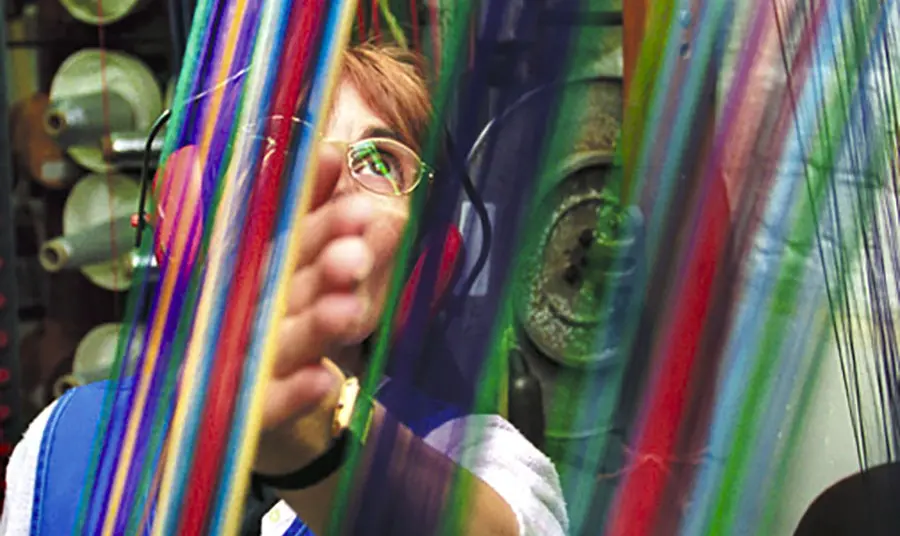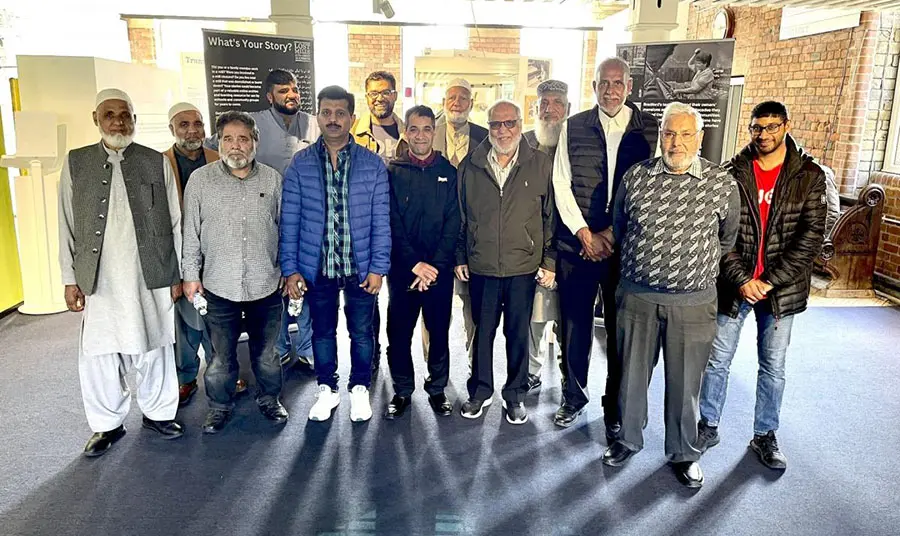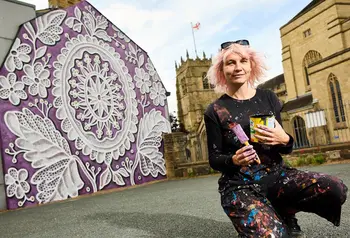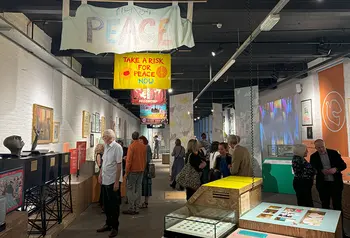
National Lottery Grants for Heritage – £10,000 to £250,000
The project
In the 1960s Bradford was home to hundreds of textile mills and thousands of workers, producing everything from material for suits to fabric for aeroplane seats.
Now, most of the mills have closed and the buildings have been pulled down or turned into offices or flats.
Lost Mills and Ghost Mansions recorded and transcribed more than 80 interviews with people who were at the heart of Bradford’s textile boom. The project aimed to preserve first-hand memories of the textile industry before they also become lost.
Izzie Smith, project researcher and coordinator, says: “We wanted to focus on the mill workers and the mill owners – real people speaking about how it felt and smelled and the realities of working there every day.”
The organisation
The project was led by Alan Dix, artistic director of Bradford-based production company, 509 Arts. Alan himself worked in a textile mill after moving from London to Bradford in 1967.
509 Arts and key project partner Bradford Community Broadcasting worked with organisations including Bradford Museums, Saltaire Inspired and community groups including the Sangat Centre in Keighley, BEAP Community Partnership and Anand Milan Centre.

The funding
Our grant supported Lost Mills and Ghost Mansions to make sure as many people as possible were involved and a wide range of experiences were represented.
People travelled from all over the world to work in Bradford’s mills, with Bangladeshi and Pakistani communities making up a large portion of the workforce. 509 Arts carried out interviews in several languages. The recordings were then transcribed and translated to make them accessible to everybody.
Bradford Community Broadcasting developed school children’s radio skills whilst helping them learn about the history of the mills.
Alongside a comprehensive archive, the stories have been gathered in the Lost Mills Learning Zone, an online resource containing audio, video and photos. An interactive Google map lets people explore the streets of Bradford and see how the cityscape changed as the mills disappeared.
Izzie says: “It can be challenging for younger generations to picture a world that’s so different from their own. Having visuals has been key to helping people understand and connect with that past.”
Further funding from Arts Council England supported 509 Arts to host a multimedia exhibit and create two modern textile pieces.
The results
One of the project’s biggest impacts has been the sense of pride it’s built in the community.
Izzie says: “It’s been quite therapeutic for the participants to know their stories are interesting and valued. The people we interviewed take real pride in having worked in the mills and in being part of that history.”
Lost Mills and Ghost Mansions has also engaged new people in a lesser-known part of Bradford’s heritage. Through its work with schools, the project has helped inspire young people to learn about an aspect of local history that isn’t covered by the curriculum.

The future
And Bradford’s textile industry is not just a thing of the past. By interviewing people currently working in textiles, the project hopes to promote small businesses in the city and celebrate those keeping the craft alive.
The goal is to make even more people aware of Bradford’s textile heritage through the Lost Mills Learning Zone. 509 Arts is also partnering with Bradford 2025 to encourage people to see the city in a new light during its year as UK City of Culture.
Top tips
Alan and Izzie share their advice for anyone planning their own oral history project:
- Be clear with your deadlines, timeline and resources to help manage your workload.
- Use artificial intelligence to save time and simplify processes. For example, AI tools could help you transcribe audio or identify themes and keywords.
- Involve people with specialist skills, whether that’s someone who’s worked in archives or as a transcriber.
- Record and document the process and take plenty of photos. It’ll really help when it comes to evaluating your project.
- If something interests you, the chances are it'll interest other people. Don't discount interviews where you think you just had a laugh for an hour – they can be the best, most authentic pieces.
More tips from Alan and Izzie can be found on the Lost Mills Learning Zone. Thinking of applying for funding from us? Take a look at our oral history good practice guidance.


